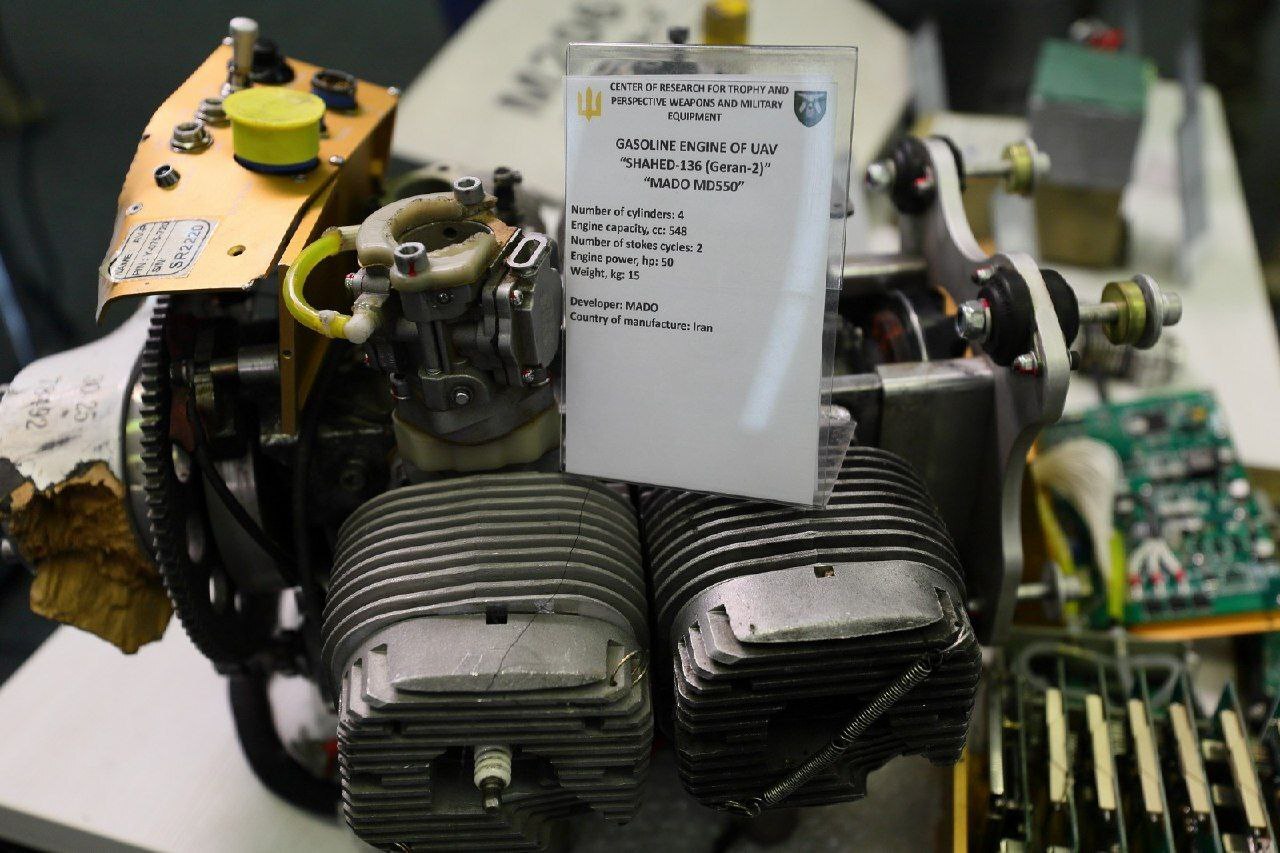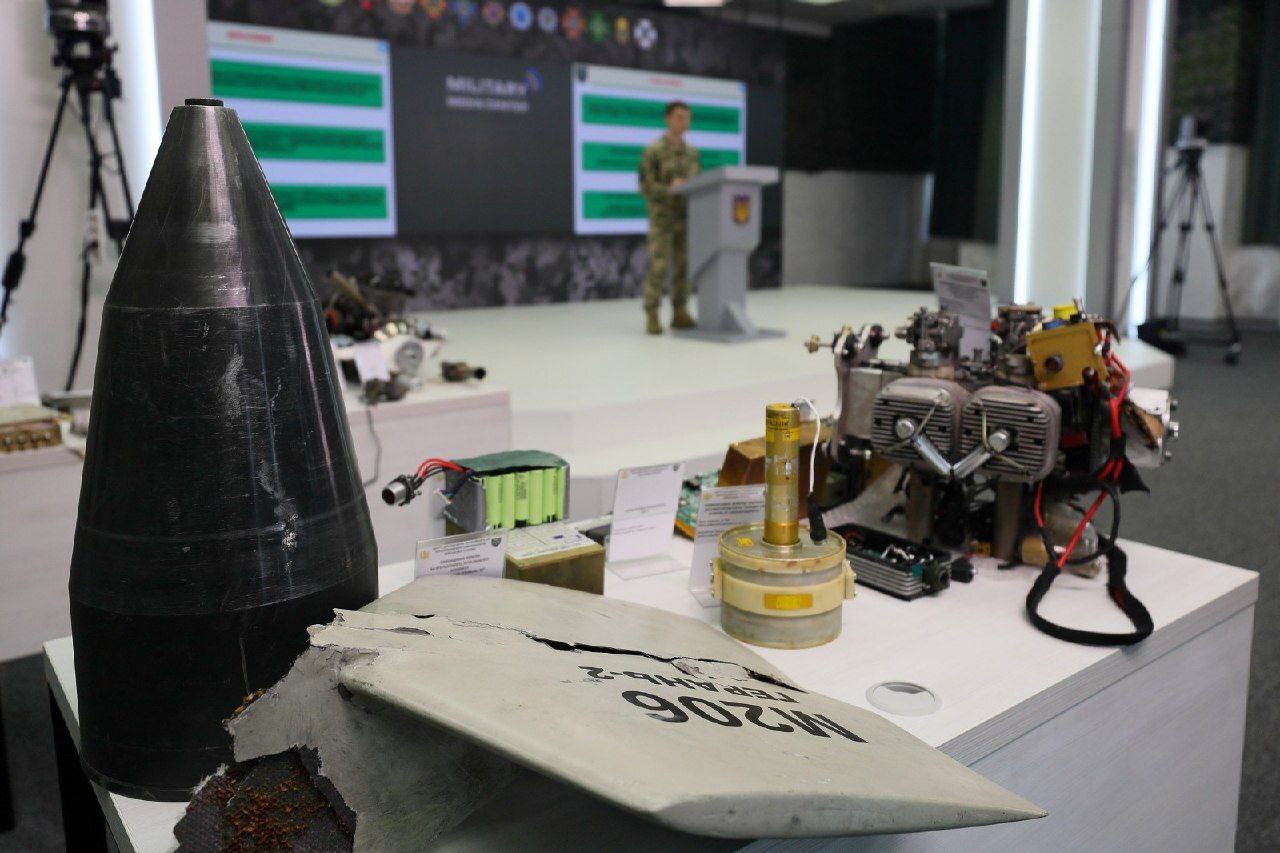A hacking group claims to have stolen files from an Islamic Revolutionary Guards Corps (IRGC) front company in Iran that provides fine details about the Shahed-136 Kamikaze drones that Russia has been using to striking Ukraine for 15 months, The recent dump of leaked documents has called into question how much Russia actually paid Iran for the drones, and while we cannot confirm the authenticity of the documents or the general accuracy of the figures they state, they do prompt an important question — what does a Shahed-136 actually cost?
Media outlets like The New York Times and CNN have reported that the drones were costing Russia about $20,000 apiece. However, documents obtained through the claimed hack show vastly different figures.
The documents state that in 2022, Russia intended to produce 6,000 Iranian drones under license at its facilities within 2.5 years, according to the Ukrainian Militinaryi news outlet. The publication cites a website called Iran Cyber News. The Iranians initially asked Russia to pay $375,000 per Shahed, but that figure was eventually negotiated down to $193,000 per drone for 6,000 units or $290,000 each for 2,000 drones, the publication reported. The total value of the production contract, including the transfer of technologies, equipment, 6,000 UAVs, and software, was $1.75 billion, according to Militinaryi.
However, the documents state that there was a plan for full localization of production in Russia with minimal supply of Iranian components that could be executed in 2023, with the projected cost of each Shahed-136 dropping to about $48.800 each. The all-in ‘transfer’ price was at $165,500 per unit, Militinaryi reported. “This gap is probably due to the mortgaged payments for linear production, additional costs, and investments in the enterprise.” In other words, this would be the all-in cost of the program, including infrastructure and licenses, amortized across the production run. The more you build, the less that number would be as fixed costs are further offset. This would give a total program cost of just under $1B.
Regardless, a unit cost of around $50,000 would seem quite realistic based on everything we know about the Shahed-136 and how they are made, with that price being further reduced, and substantially so, over time.
Russia transferred more than two million grams of gold to Iran as part of these deals, the publication says. Once again, we do not know the final terms of the deal for certain or what it actually included.
The per-unit cost figures released by the hackers do not seem out of line, the CEO of a Ukrainian drone manufacturer told The War Zone.
“The disclosed unit costs encompass the technology transfer inherent to each system, which is a reasonable inclusion, particularly given the complexity of such systems,” said Francisco Serra-Martins, CEO of Terminal Autonomy. “It is noteworthy, however, that the Russian Federation opted to compensate for this transfer directly with gold, rather than through alternative means, such as reciprocal technological exchanges with the Iranian Government, which is a customary practice in similar arrangements.”
The previously quote price of $20,000 was unrealistic, he added.
“Regarding the initial cost estimates, it is evident that the previously speculated figure of $20,000 per Shahed was significantly off the mark,” he told us. “It is uncommon for 50hp engines, a key component of the system, to be procured for under $10,000 unless through illicit channels. Drawing from my experience, notably with our Shahed analog project at Terminal Autonomy, the AQ 400 Scythe program, after research and review of captured systems, our team made deliberate design divergence from the Russian and Iranian counterparts to mitigate the substantial costs associated with their complex design, particularly in regards to tooling composite airframes.”
The AQ 400, with its cylindrical body and tandem wings, is a vastly different design compared to the delta-shaped Shahed-136. It is entirely optimized for low cost and mass production, while maintain long-range ‘one-way attack’ capabilities. You can read our profile on this new drone and its design drivers here.
“The benefit is you get additional lift with reduced wing span,” Serra-Martins said of the tandem wing design.
Scythe uses a much smaller 12hp motor. “We use other motors but also make our own,” Serra-Martins explained. “These are $150, rather than say $1,500 for a DLE, or $3,000 for a Skypower,” he said. “These cost more upfront to produce, but are cheaper per unit, and are sanitized, no serial numbers.”
The Russians, he added, “can do this, but given their system is more complex, a 50 hp motor is far more expensive than a 12 hp motor. The aerodynamics of the Shahed is surprisingly shit also. Lancet is similarly terrible. Twice the motor mass of our AQ 100 [Bayonet loitering munition], and it takes half the payload.”
Serra-Martins’ analysis of the Shahed-136 drone cost matches up with one that the Ukrainian Defence Express media outlet made in April 2023.
The publication noted that the Iranian MD-550 engines used in Shahed-136s are a knock-off of a German-made Limbach Flugmotoren L-550 aircraft engine.
“Based on the fact an L-550 costs USD 12,000 to 17,000 in the open world market, the Iranian copy cannot be significantly cheaper, for at least the sanction regime that puts an additional financial toll on all procurement operations,” the publication reported. “That makes the earlier suggestions that a Shahed-136 costs around $20,000 or less per unit doubtful as it would be unreasonable if the engine alone made up such a big portion of the total price.”
A Chinese company is currently advertising MD-550 engines for $13,580 a piece.
While the Shahed-136 fuselages are made out of accessible composite materials, Russia has still had to rely on European components, The Guardian reported in September. According to a document it obtained, “52 electrical components manufactured by Western companies were found in the Shahed-131 drone and 57 in the Shahed-136 model, which has a flight range of 2,000km (1,240 miles) and cruising speed of 180kmh (111mph).”

Seeking foreign components could drive up the cost of the drones, Serra-Martins said, “particularly given they have to purchase through shell companies, often a few layers deep.”
Russia, however, has been working to reduce how much it is spending on each Shahed-136. As we reported in September, Moscow began using a new generation of Shaheds. They were found to have new warheads, engines, batteries, servomotors and fuselages, Capt. Andriy Rudyk, a representative of Ukraine’s Center for the Research of Trophy and Prospective Weapons and Military Equipment, said at the time in a press briefing.
Aside from the addition of tungsten balls in its warhead, much of the rest of the changes did not alter the general characteristics of the drones, but appear to have been engineered to reduce the manufacturing cost to increase production volume, Rudyk said.

The leaked documents were obtained by a group calling itself the Prana Network, which claims to have grabbed them by a breach into the email servers of an IRGC front company called Sahara Thunder, Militinaryi wrote. The documents are a small part of a larger 10-gigabyte tranche of technical designs, contracts, plans to set up a drone manufacturing plant in Russia’s Alabuga Special Economic Zone, among other data Prana Network claims to have purloined.
The documents do not directly name the type of the manufactured product. Instead, the drones are referred to in the documents under a special code as “Dolphin 632 engine boat.”
In addition to the reported cost of the drones, the documents also claim to show the production process Russia is using to make them, hand assembling them from molds.
While the provenance of the documents remains unclear, some of the information they contain corresponds to previous reporting about the number of drones Russia has sought to build, the location of the manufacturing facility and the timeline for production.
In August, as we previously noted, The Washington Post revealed new details about Russia’s plan to domestically manufacture Iranian Shahed-136 drones. The drones will be built in a facility 500 miles east of Moscow in the Tatarstan region, the Post reported. The goal is to “domestically build 6,000 drones by summer 2025.”
Russia was also planning to improve on Iran’s dated manufacturing techniques, however, from images found in the leaked documents, it is unclear if Russia has achieved that goal, but the aforementioned newer Shadeds show significant changes this regard.

Regardless, the persistent threat to Ukraine posed by Shahed drones launched by Russia is undeniable, something White House National Security Council spokesman John Kirby noted today.
“Air defense…for Ukraine is critical right now, particularly in these winter months,” Kirby told reporters, including from The War Zone, Tuesday morning. “We have seen a continued onslaught by Russian drones – actually supplied many of them by Iran – and cruise and ballistic missiles targeting particularly two things in Ukraine: one is obviously military units, but also specifically and directly targeting Ukraine’s defense industrial base to try to eliminate Ukraine’s ability to organically produce many of the munitions that they need to defend themselves.”
The drones, as we have reported frequently, have also been used to bombard Ukrainian cities, power infrastructure and port facilities, as you can see in this video below.
Russia launched more waves of Shahed drones at Ukraine this week as part of its ongoing standoff strike campaign.
For Russia, the cost of launching Iranian-made Shahed-136 drones at Ukraine was considered to be a bargain. Even at $50,000 or more a piece, they are far less expensive than many of the air defense munitions used to counter them. A single AIM-120 Advanced Medium-Range Air-to-Air Missile (AMRAAM) fired by one of Ukraine’s National Advanced Surface-to-Air Missile Systems (NASAMS) that have shot down plenty of Shaheds costs roughly between $500,000 to $1 million, depending on the variant. A Patriot interceptor costs a multiple of that. Teams of Ukrainians with powerful lights and gun trucks hunt these drones on a nightly basis in an attempt to knock them out of the sky and to save precious interceptors in doing so.
The Shaheds are also far less expensive than their cruise missile counterparts, while still being able to prosecute targets at similar ranges, although with less destructive power. They also make air defense far more complicated on top of sucking up valuable interceptors.
As it sits, we really don’t know the exact cost of Shahed-136 drones, but as Russia has invested very heavily in their production, the unit price will drop and the drones will only get more capable. Iran is also seeing to that.
So, no matter how much these drones cost Russia, they cost Ukraine a whole lot more.
Contact the author: howard@thewarzone.com
